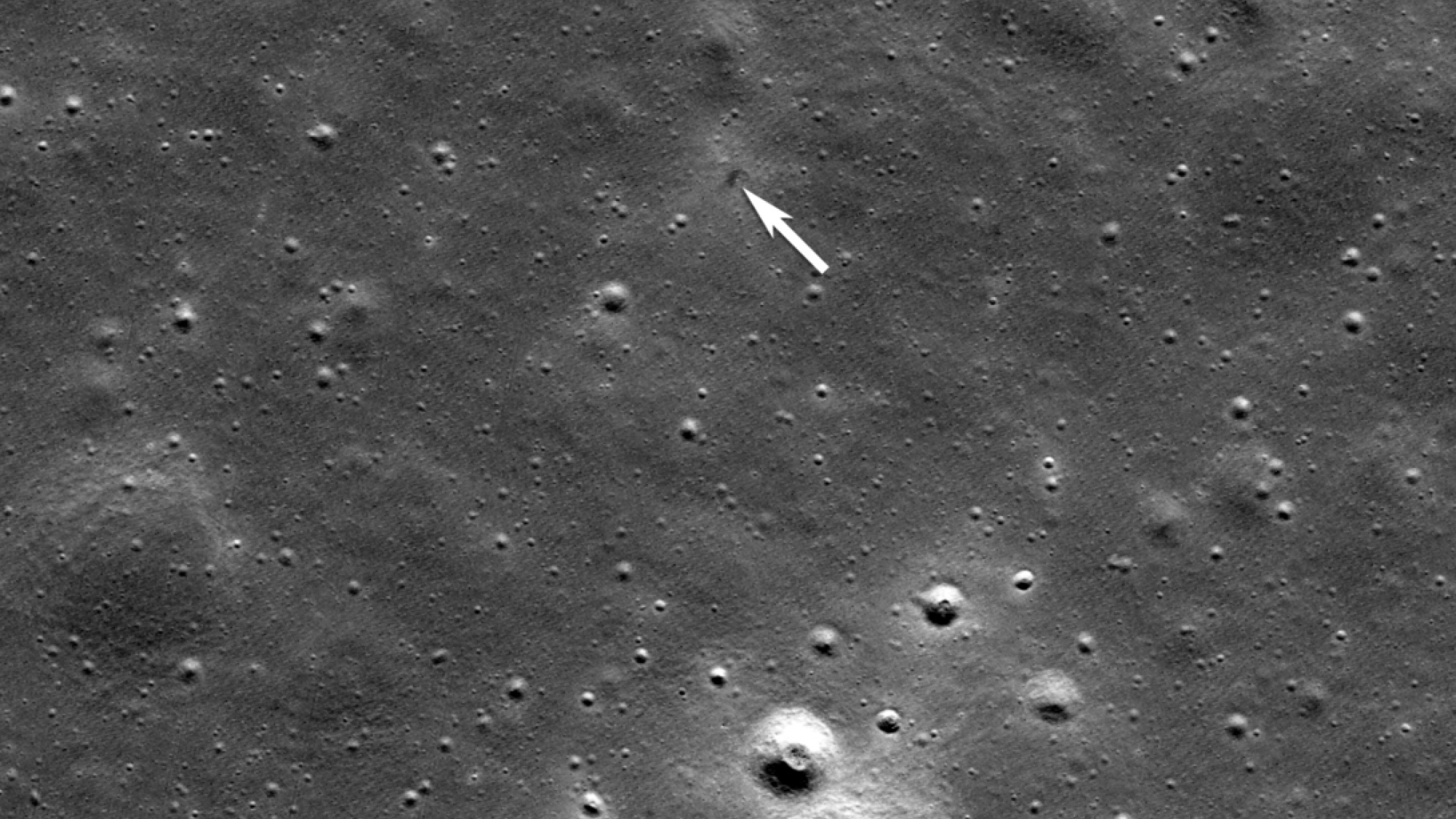NASA moon orbiter spies grave of crashed Japanese lunar lander (image)

"The dark smudge formed as the vehicle excavated and redistributed shallow regolith."

NASA's Lunar Reconnaissance Orbiter (LRO) has imaged the crash site of Resilience, a moon lander built and operated by the Tokyo-based company ispace.
Resilience tried to touch down on June 5 in the center of Mare Frigoris (Sea of Cold), a volcanic region interspersed with large-scale faults known as wrinkle ridges.
Mare Frigoris formed over 3.5 billion years ago as massive basalt eruptions flooded low-lying terrain, according to Mark Robinson, a lunar scientist for the company Intuitive Machines who is based in Phoenix, Arizona. Later, the wrinkle ridges formed as the crust buckled under the weight of the heavy basalt deposits.
Lost on landing
Shortly after Resilience's landing sequence, the ispace Mission Control Center was unable to establish communications with the spacecraft. The team determined that Resilience had likely been lost, a conclusion that was firmed up a few hours later.
Also lost on landing was the Tenacious microrover, a small wheeled vehicle developed in Luxembourg by ispace's European subsidiary. Tenacious carried a piece of artwork on its front bumper — Mikael Genberg's "Moonhouse," a small replica of the red-and-white homes famous in Sweden.

Dark smudge
Resilience left some telltale marks when it slammed into the moon on June 5, and LRO noticed them.
"The dark smudge formed as the vehicle excavated and redistributed shallow regolith (soil); the faint bright halo resulted from low-angle regolith particles scouring the delicate surface," Robinson, the principal investigator for the Lunar Reconnaissance Orbiter Camera, told Inside Outer Space.
Breaking space news, the latest updates on rocket launches, skywatching events and more!
Robinson told Inside Outer Space that the crash spot is roughly 1.5 miles (2,400 meters) from the one decimal place pre-landing ispace web page of latitude and longitude. One degree is 30 kilometers, so one decimal of that would be three kilometers, or roughly 2 miles.
Resilience was ispace's second moon lander. The company's first such probe also crashed during its touchdown try, in April 2023.
Scott Manley has more details on the Resilience crash; check out his video here.

Leonard David is an award-winning space journalist who has been reporting on space activities for more than 50 years. Currently writing as Space.com's Space Insider Columnist among his other projects, Leonard has authored numerous books on space exploration, Mars missions and more, with his latest being "Moon Rush: The New Space Race" published in 2019 by National Geographic. He also wrote "Mars: Our Future on the Red Planet" released in 2016 by National Geographic. Leonard has served as a correspondent for SpaceNews, Scientific American and Aerospace America for the AIAA. He has received many awards, including the first Ordway Award for Sustained Excellence in Spaceflight History in 2015 at the AAS Wernher von Braun Memorial Symposium. You can find out Leonard's latest project at his website and on Twitter.
You must confirm your public display name before commenting
Please logout and then login again, you will then be prompted to enter your display name.
